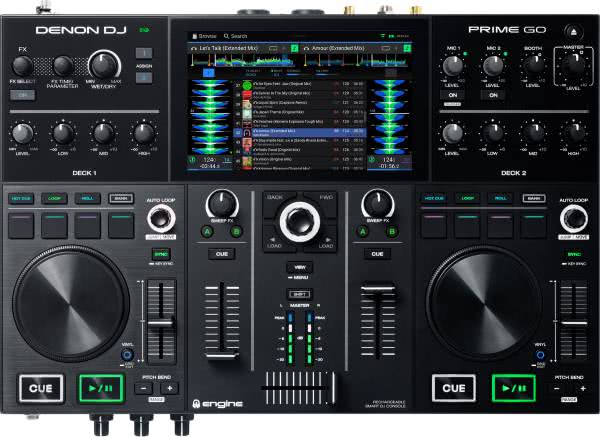With the Prime Go, Denon DJ is redefining the true meaning of standalone DJ equipment. Normally, this would be any kind of DJ gear that doesn’t rely on a laptop. With Prime Go, Denon DJ took a step further not only reinventing the traditional standalone DJ controller, but inventing a whole new category of DJ gear as well.
We have already seen revolutionary battery powered grooveboxes, such as the MPC Live MK II, and it was about time for some manufacturer to come up with some ultra-portable gear on which you can actually DJ in a traditional way with jog wheels, EQ, and faders.
In short, Denon DJ has pretty much nailed it.
Although in terms of connectivity, it is not a beast like the Prime 2, in terms of functionality, you don’t lose too much, thanks to the well-thought 7” inch multi-touch display, which retains most of the features of its big brother.
Before we dive into features, let’s mention that although it is labeled as a highly portable DJ controller - and it really is, compared to any other standalone machine - you will probably need a larger size backpack than the one for your standard 13” laptop, as it measures 41 cm in width, 27 cm in depth, and let’s not forget that it is a little over 5 cm wide, so you really do need a more generous bag to carry it around, we would even suggest a proper flightcase to ensure its safety.
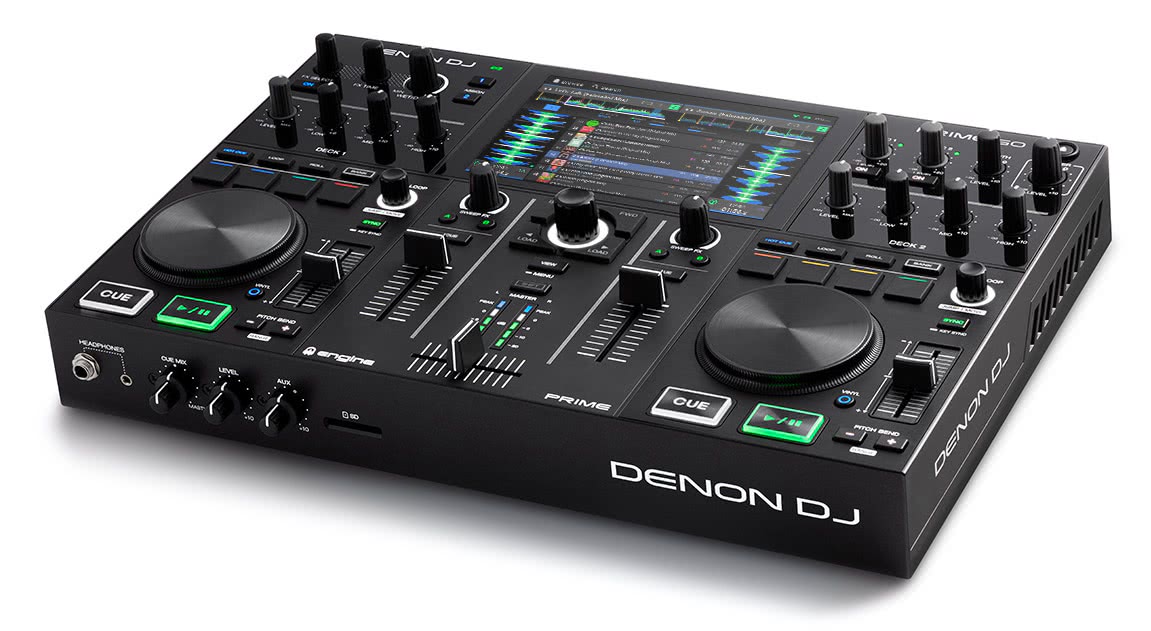
It is totally understandable that in order to make it compact and easily portable, Denon DJ had to compromise on some features, and the layout:
- Jog wheels
They are only 3 inch (7.5 cm) wide and ultra-low profile, almost 3 times less than the one on the SC6000 Prime. However, the touch capacitive jog wheels are very responsive and pitch-bending feels just fine, we had no problem getting used to them, although we would not recommend them for serious scratch performances.
- Pitch fader
Half the size as the ones on the SC6000 or the Prime 2 - no problems with this, as we are used to same size pitch faders on most entry level controllers.
- Pads
There are only 4 pads instead of 8, but with the BANK button, you can use another set of HOT CUES, SAVED LOOPS or ROLLS.
- EQ layout
This one is probably the weirdest, as EQ knobs are positioned vertically on most DJ mixers and controllers, usually with the TRIM knob above. On the Prime Go, the 3 band EQ is layed out horizontally, and although it did bother us visually, in use we haven’t had any issue with it.
- CUE and AUX controls on front
These just haven’t made it on top, and at first it feels a little awkward to reach for the CUE/MASTER blend knob to the front of the controller.
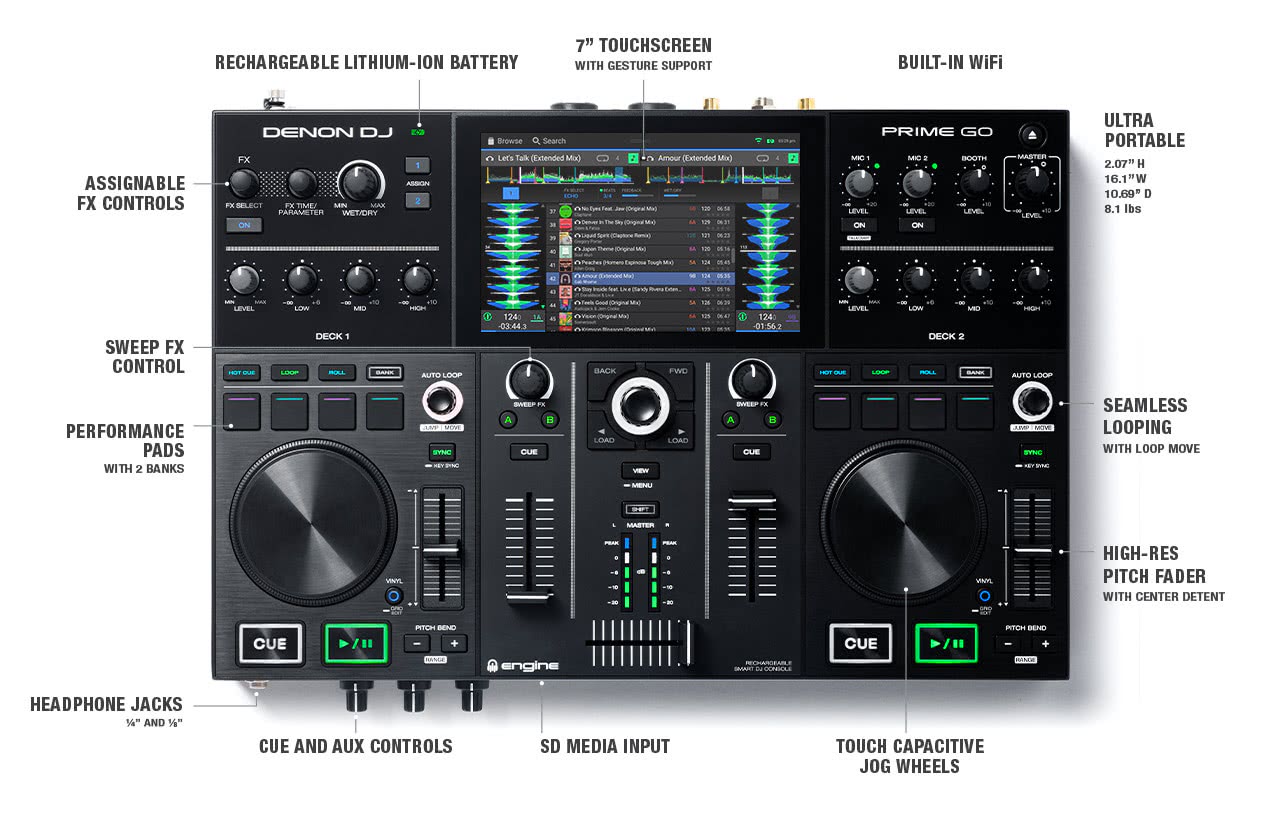
Thankfully, Denon DJ did not compromise on build quality, the Prime go feels extremely solid and robust, but most importantly all internals are the same as on high-end Prime gear. The upfaders and the crossfader haven’t been shrunk down. The display is just large enough to show all the important data and details for two tracks, and it packs almost every other feature of the Prime 2, such as the on-board track analysis thanks to the Engine DJ operating system, search functions, and the very handy drop down menu.
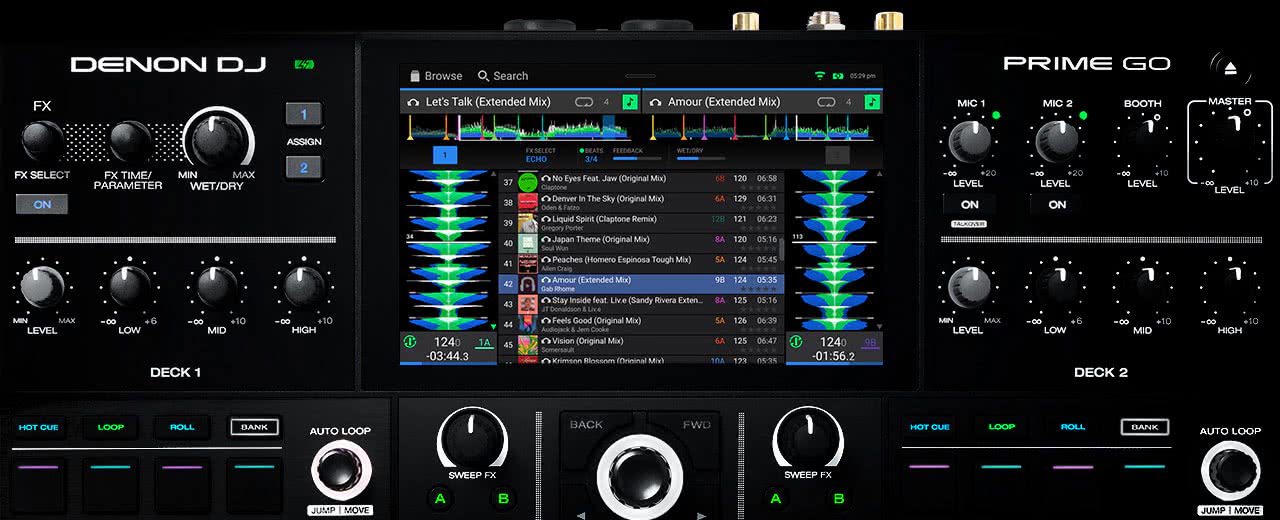
For Media, we can either use an USB stick, which we can plug in on the back of the controller, or insert an SD Card on the front. There is no SSD hard drive slot like on higher end Prime gear. There is also a USB B port to hook it up to your computer, as well as 2 balanced MIC inputs, and one unbalanced RCA AUX input, which allows you to connect any external line level source.
There are two balanced XLR MASTER outputs, one additional unbalanced RCA MASTER output, and a balanced 6.3mm Jack BOOTH output. There is also a MONO/STEREO switch on the back, which might come handy if you are playing on one speaker only. Sound quality is exceptional - although on paper its soundcard is not as good as on other Prime gear -, everything sounds crystal clear, even on a decent PA system.

The controls are pretty straightforward. We have one Sweep FX knob on each channel, which we can use as a FILTER or with the WASH fade out effect. For more effects, we can scroll with the FX select knob on the top left, and browse through 13 additional BEAT FX that will show up on the display as we rotate the knob.
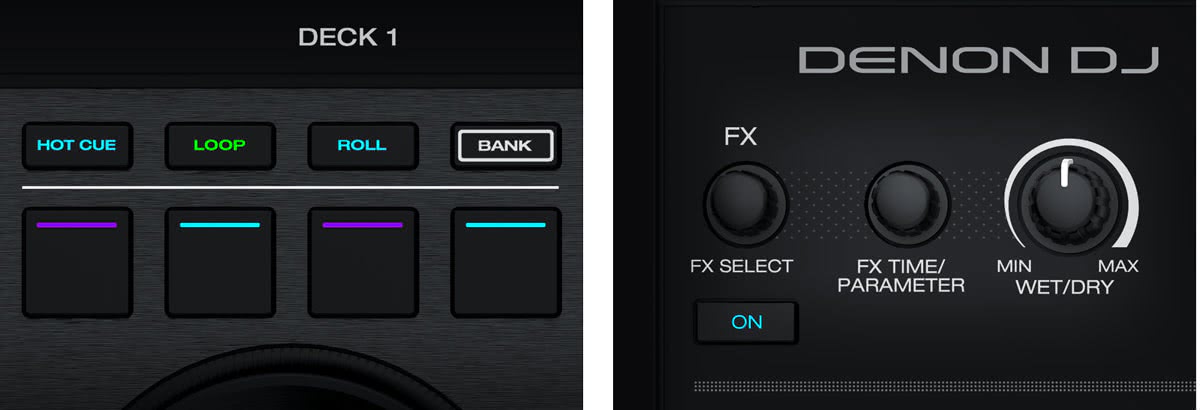
Denon DJ claims up to 4 hours of battery life. With heavy track analysis and using the display non stop, we got just a little over 3 hours and 30 minutes, which is pretty decent.
In case we don’t want to bother with copying music to USB sticks or using our laptop, there are also streaming options via Beatport Link, Beatsource Link, Dropbox, Soundcloud and Tidal. It is also possible to record your set directly to a USB stick, one thing that should be standard in the future for DJ mixers, as it is such a shame that we still have to rely on external recorders in order to capture our sets.
All of the features above make the Prime Go a true pioneer of standalone wireless DJ technology. It is super-fun to use, and after playing with it for a while, we can confidently say that we would love to have it as a backup, and we could even imagine using it as the main tool in some cases, thanks to the XLR outputs and to its compact size.
The Prime Go could suit many categories of DJs. We could imagine it as the main tool of a wedding DJ, but it could also work in a pub or a cafe for resident DJs, or for serious hobbyists who want to throw a party from time to time. No matter where it ends up, the fun is 100% guaranteed!

